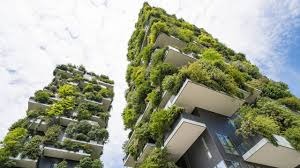Construction has historically been associated with substantial material usage and environmental impact. The industry’s modern challenge is to balance the burgeoning demand for infrastructure with the necessity for sustainable practices. A pivotal innovation in the arena of eco-friendly construction is the introduction of void formers. This technology serves as a cornerstone in reducing the environmental footprint of construction projects while enhancing structural integrity and resource efficiency.
The Role of Void Formers in Sustainable Construction
Void former systems are an inventive solution used in the construction of concrete slabs and foundations. The approach fundamentally transforms the use of concrete, which is one of the most widely consumed building materials globally. Concrete, while being incredibly durable, is also responsible for a significant percentage of carbon dioxide emissions during production. Void formers offer a sustainable alternative by strategically creating voids within concrete structures.
The use of a void former enables the conservation of concrete without compromising on structural stability. It facilitates the construction of lighter, yet strong concrete elements, subsequently lowering the carbon footprint of the construction process. This methodology complements the movement toward sustainable construction, which emphasises reducing waste, using materials efficiently, and minimising energy consumption.
Environmental Benefits of Void Formers
One of the most profound benefits of void formers is the reduction in concrete usage. With less material required for construction, there is a consequential decline in carbon emissions during the manufacturing phase of concrete. This reduction is pivotal in the industry’s efforts to combat climate change. Additionally, the transportation and handling costs are reduced, further lessening the environmental impact of construction projects.
Aside from lowering concrete usage, void formers are often manufactured from recycled materials, which further underpins the sustainable ethos they embody. The incorporation of recycled plastics or other eco-friendly materials into their production cycle signifies a circular economy, minimising waste and promoting the reuse of resources.
Economic and Practical Advantages
The introduction of void formers into the construction process is not only an environmental win but also contributes to economic and practical advantages. By regulating the volume of concrete, constructions become more cost-effective due to diminished material expenses and lower weight, which facilitates easier handling and more straightforward transportation logistics.
Another practical advantage lies in the resilience of buildings with void former systems. The voids ease stress on the slabs, thereby enhancing their durability and reducing the risk of cracking and subsidence. This results in extended lifespan and less frequent need for repairs, underlining the economic sustainability of the technology.
Influence on Design Possibilities
The architectural implications of void formers are as significant as their environmental and economic benefits. The reduction in slab weight enticed by void former technology widens the spectrum of design possibilities. Enhanced flexibility in architectural design now allows for more ambitious and creative structures, which were previously not feasible owing to the constraints of traditional solid concrete slabs.
Design teams can now explore new avenues in the blueprint phase, enabling designs that are both aesthetically appealing and functional, while still adhering to sustainable building practices. The versatility and adaptability of void formers mean they can be moulded to a myriad of shapes and sizes, catering to bespoke project requirements.
Addressing Flood Risks and Ground Compaction
Void former technology also addresses practical environmental concerns such as flood mitigation and ground compaction. Their structure can assist in managing water flow, making them instrumental in flood-prone areas. Furthermore, by lessening the load on the soil, void formers help in reducing ground compaction, a significant issue that can lead to a plethora of structural problems and adversely affect the ecosystem.
The adaptation of void former systems is proving to be an invaluable asset in managing the sustainable construction’s intricate balancing act between development and conservation. The varied advantages present a compelling case for their broader adoption across the construction industry.
Obstacles and Challenges
Despite the apparent benefits, the widespread adoption of void former systems faces several obstacles. The construction industry is traditionally resistant to change, often favouring established methods over novel technologies. Hence, the integration of void formers into standard building practice requires concerted efforts to educate industry stakeholders about their long-term advantages.
Moreover, initial costs and the technical complexities associated with the implementation of new construction methods may pose challenges. However, these are often short-term concerns that will diminish as void formers become more commonplace and industry professionals develop familiarity with their application and benefits.
Conclusion
The integration of void formers into the construction process marks a significant step forward in sustainable building. With benefits ranging from reduced emissions and material costs to increased design freedom and structural resilience, their role in shaping the future of construction is invaluable. As the construction industry accelerates towards green building practices, void former technology stands out as a critical innovation for building a sustainable future.
Overcoming challenges such as cost and traditionalist resistance is crucial for the technology’s proliferation. As more construction firms and developers recognise the long-term economic and environmental savings of this approach, it becomes clear that void formers are more than just an eco-friendly option—they are paving the path towards a greener, more responsible, and more efficient construction industry.
In the journey to sustainable construction, it is evident that void formers are not just filling physical voids in concrete; they are also filling a critical gap in the industry’s sustainability models. As we continue to explore their potential and innovate further, void formers are poised to revolutionise the world of construction and play a vital role in building the future responsibly.
READ MORE : What Makes Event Venue Rental in Miami So Popular?
